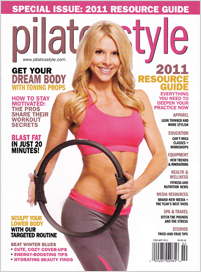Did you know that breathing provides you with your very own, built in massage therapist and chiropractor?
We usually think of breathing as the unconscious process that moves air in and out of the lungs twentyfour hours a day, seven days a week. It’s one of the most basic requirements to keep us alive. But it turns out there's a whole lot of stuff that depends on our breathing apparatus working correctly and optimally.
In the last post we focused on the diaphragm and its role in the overall health of your spine when you breathe.
Today we're looking at imbalances with breathing. In the same way you can have an imbalance in your back or leg muscles, you can have an imbalance in the way you breathe; especially if scoliosis is involved.
Shallow breathing, which happens when air doesn't travel very far down into the lungs, is the most common imbalance with breathing. Usually shallow breathing taxes the neck muscles in ways they weren't meant to work and even gets the shoulders involved. Shallow breathing can keep the neck and shoulders chronically tight.
It’s also possible to have a side-to-side imbalance when you breathe which involves breathing more into one side, or lung, than the other.
But first, let's consider some of the many reasons we breathe. We breathe to:
- Take in oxygen, which provides us with fuel for movement
- Lower blood pressure
- Increase circulation
- Promote spinal movement
- Circulation, which creates an “inner shower” or cleansing
- Transport nutrients to your tissues (tissue respiration)
- Stimulates your lymphatic system (immune system)
- Promote oscillatory activity of cells
- Provide posture support
- Hydrate your tissues
- Motivate innermost movement, keeping your internal organs and spine healthy
When you take a good look at this list and think about it, it puts into perspective just how amazing and efficient our bodies truly are. It also highlights the health problems that can arise when we are not breathing fully, or have a muscular imbalance in the lungs.
Today’s video shares an exercise to help you discover if you may indeed breathe more into one lung than the other and shows you how to help bring your breathing into balance.
If you have scoliosis in your thoracic spine, this is an extra powerful exercise for you!
Give One Lung Breathing a try and let me know how it goes in the comments below!
See you in the studio!
Sydney









15 Responses
So interesting Sydney – thank you! I have often played around with closing off one nostril (always there right ) on my own …not knowing what I was doing or trying to accomplish but now I wonder if I instinctively felt it was some backdoor to direct the breath into my left thorax! I also seem to sense that too much air enters my right nostril/sinus. Do you know how this actually works? – is it providing some neuromuscular signal when we block one nostril – allowing more air to fill the opposite chest wall/lung/diaphragm? That was my other question .. is there a difference between directing breath into the lung this way vs directing breath to the ribs utilizing the diaphragm focus as in your last video?? Much Gratitude as always! RL
Hi Robyn! It turns out that most everyone breathes more through one nostril than the other. In yoga, they teach alternate nostril breathing to balance this out, which improves brain function, improves sleep, and triggers the parasympathetic nervous system to calm the body. While there’s not physically a direct connection from the right nostril to the right lung, or left nostril to the left lung, it sure does feel that way in this exercise! The focused intention of directing more air into one lung increases the volume on that side activating the breathing muscles (intercostals and diaphragm) more fully. This technique is the same as the last video, just with the focus being on noticing the differences side to side. From there, if you find a difference as you did, then you can use this exercise as a powerful tool to help bring balance into your breathing. Thanks for your question!
Thanks so much Syndey. I did not know this about the breathing more through one nostril! Turns out I actually had sinus surgery on that right nostril due to enlarged turbinates and a bone spur that was causing headaches so I thought it related to that!! I am familiar with the alternate nostril breathing in yoga too – always fascinated me, and does seem to get us into the parasympathetic mode. I agree it really feels like there is some neuro connection between expanding the volume in the ribcage on the open nostril side. It must trick the brain somehow through focussing the attention this way. Pretty amazing! 🙂 Makes me want to put an earplug in my right nostril periodically ~ lol!
Hi, can you tell me where to buy the toe correct orbs that you wear in your videos please.
Thanks
Hi Antonia, I sell Correct Toes in the studio, but you can also buy them online here. They are awesome!
Hey Sydney, I don’t know how I will ever repay you back for this. Thank you!
When I started Doing this Exercise I felt a immediate reactions e.g{ a. I felt like My left lung is weaker than My right one.
b. I felt like my left Back side was Numb for so long & like it’s stil is and then I felt tingling on my my Left Butt as if Blood is rushing through a vain which was on a long drought season. I had a really scary sensation on my face, lips & my left eye it felt like it didn’t exist before & that I just found them now. About me: I am a smoker, + I also use Khaat (Mirra) on the daily basis, I recently went through Trauma. Does this sound familiar? I don’t think it does. if it doesn’t, I strongly believe a majority of the people who live in Eastleigh, Nairobi, Kenya. are going through this! I need your help on that 1 question + if you could explain. Thank you!
Hi Abdirahman, thanks so much for your feedback! I agree your experience with this exercise is unique. It sounds as though you felt a combination of oxygenation happening and mindful presence in your body, which is wonderful. How has your experience with the exercise changed with continued practice?
Hi Sydney, such a great website and feature on fixing shallow breathing. I have slight scoliosis, very shallow breathing and have a collapsed right hand side. When doing this exercise should I be breathing just through my right nostril (as my right hand side needs more inflating) or do 50% right nostril and 50% left nostril breathing?
Kind regards,
David
Hi David, It’s good to do the breathing on both sides, but with more focus on inflating your right side since that’s the side that needs more space. You could do the right side, then the left, and then go back and do the right side again. Thanks for your feedback!
Hey Sydney, I loved the video, I used to be a college athlete I stop about a year ago and haven’t really been exercising that much. I’m still in decent shape but a couple days ago I started breathing very hard, I keep having to stop and take deep breathe and if I want up the stairs I literally feel as if I gotta sit down and breathe.
Hi Mario, thanks for sharing and hope this video is helpful.
I told I had Dyspnea . Deep breath just not happing . Try your video no towel I can’t do out right nostril . Left one hard but I can do it . Ps Dr said Dyspnea never sent to lung Dr . However, is my cardiologist . Rest Dr agreed with him. I found your video quite helpful. Thank you for making it.
I’m so glad this was helpful, Shari. Thank you for letting me know!
I used my recently acquired puffer and the oximeter read 85. I did this exercise and felt nothing on left side. Diod the nostril exercise. Oximeter read 91 . Thank you!
That’s fantastic, Karen! Thanks for sharing!